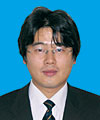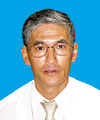 |
|||||
|
|
|||||
|
Global Standardization Activities Vol. 5, No. 10, pp. 68–71, Oct. 2007. https://doi.org/10.53829/ntr200710gls Toward Standardization of EMC Requirements for IP Equipment (for Emission and Immunity)AbstractThis article introduces recent trends in electromagnetic compatibility (EMC) specifications for communication equipment used for services provided over IP (Internet protocol) networks.
1. IntroductionWith the spread of broadband services in recent years, it is becoming possible to offer various services over an IP (Internet protocol) network, not only the services provided over conventional leased lines and other important line services, but also TV broadcasting and other communication services for which realtime characteristics are important. The NTT Group stipulates the quality concerning electromagnetic compatibility (EMC) required in the development or procurement of telecommunication systems and equipment in Technical Requirements (NTT-TRs). These specify the EMC conditions (limit values and measurement methods) concerning emission, immunity, and overvoltage tolerance necessary to provide safe and problem-free telecommunication services (Fig. 1).
Those limit values and measurement methods comply with the specifications of IEC/CISPR (International Electrotechnical Commission, International Special Committee on Radio Interference), which is a special comittee of IEC, ITU-T SG5 (International Telecommunication Union Telecommunication Standardization Sector Study Group 5), and other such international standardization organizations for information technology (IT) equipment and communication equipment, and they are being observed by companies in Japan and abroad. This article introduces some trends in EMC requirements for communication equipment for IP services in recent years. 2. Toward emission standardsConcerning the regulation of electromagnetic emissions from IT equipment in Japan, in 1985 the Ministry of Posts and Telecommunications (now the Ministry of Internal Affairs and Communications) accepted the CISPR report entitled “Permitted Values and Measurement Methods for Emissions from IT Equipment” (the current edition is the third edition, 2000) and instituted self-regulation on the technical basis specified by the Voluntary Control Council for Interference by Information Technology Equipment (VCCI). The history of past changes and planned future changes to emissions specifications are shown in Fig. 2. This decision and the VCCI technical standards comply with CISPR publication 22, which is a special committee of IEC. The EMC directive EN55022 regarding the specifications for Europe (EN standards: CE marking) and FCC parts 15 and 68 of the U.S. Federal Communications Commission (FCC) specifications and so on also are applied in conformity with CISPR22, so the limit values and measurement methods for electromagnetic emissions are being standardized internationally.
In Japan, equipment for use in telecommunication facilities that is used only within buildings that are under the management of telecommunication companies is excluded from the application of VCCI regulation, so self-regulation for communication equipment installed in telecommunication center buildings has become necessary. The NTT Group has specified the “TR for Electromagnetic Disturbance Emitted from Telecommunication Equipment” (TR 550004 version 3) to serve as the standard for development and as specifications for procurement, by utilizing international standard requirements based on CISPR22 and ITU-T K.48. Concerning CISPR22, the third edition (CISPR 22 Ed. 3.0, published in 1997) is currently applied in Japan, but edition 5.2 has already been published (in 2006), and reporting by the IEC CISPR is currently under way. Along with that, for the VCCI technical requirements, the following changes are planned in combination with the application of the limit values to the communication ports for which the previous application was extended. (1) Apply the limit values for transmission common-mode emission to the communication ports from April 2008. (2) Add new limit values and measurement methods for radiation emission above 1 GHz. (3) The testing arrangements for desk-top equipment, floor-mounted equipment, and combined floor-mounted and desk-top equipment follow the descriptions in the text and the test arrangement diagrams. (4) Concerning uncertainty, there is an obligation to record it in the test results log. In the case of item (2), a tentative postponement until April 1, 2010 has been decided to allow for the preparation of the measurement equipment, etc. In addition to the above revisions, the NTT Group plans to revise the TR, such as adding stipulations for IP equipment in communication centers. Furthermore, the IEC/CISPR Subcommittee I is currently working on a revision of CISPR 22 Ed. 6.0. It is also proceeding with the enactment of CISPR 32 Ed. 1.0. It is planning to establish emissions requirements for new forms of electronic equipment by adding “multimedia equipment” to “IT equipment” in the “Multimedia equipment Radio disturbance characteristics—Limits and methods of mesurement”. CISPR 32 Ed. 1.0 is proceeding with plans to integrate CISPR22 Ed. 6.0 and CISPR13 Ed. 4.0 (sound and television broadcast receivers and associated equipment—Radio disturbance characteristics—Limits and methods of measurement). 3. Trends in immunity specificationsIn Japan, the Telecommunications Council (now the Information and Communications Council) accepted the CISPR National Committee report on “Immunity characteristics of Information Technology equipment—Limits and methods of measurement” (1998) and established guidelines for IT equipment immunity in the form of guidelines for each industry. Those guidelines, however, do not carry the force of self-regulation, unlike the regulations for emission. In Europe, EMC directive for immunity regulate in the same way as the emission specifications. The USA has specifications for measurement equipment and methods (ANSI: American National Standards Institute), but Japan does not have any similar legal restrictions on immunity level. The NTT Group has specified a “TR for Immunity of Telecommunications Equipment” (TR549001, Ed. 3) based on the CISPR24 and ITU-T K.48 international standard specifications. While the emission specifications are mandatory, the immunity specifications are simply recommendations, in line with the regulation of industries in Japan. Nevertheless, the spread of IP equipment in recent years has been accompanied by the use of ”Ębest effort' communication equipment being used for important lines and realtime services (voice and video), and failures have been occurring. France Telecom has been implementing IPTV broadcasting services over ADSL (asymmetric digital subscriber line) lines since 2004, but impulse noise and inverter noise from electronic equipment in customers' homes have frequently caused disconnections and degradation of video quality (Fig. 3).
A great deal of R&D is being done on QoS (quality of service) control technology for IP services, but now, for the first time, improvements in telecommunication quality can be expected from a low layer such as EMC. Accordingly, the investigation of EMC with respect to IP services is an important issue. Therefore, France Telecom and NTT began joint research on EMC standardization for IP services in 2006. We are conducting joint research on the immunity boundary values of IPTV equipment and other such equipment used in realtime services as well as on measurement methods in order to develop a standardization Recommendation in conjunction with the CISPR SCI subcommittee WG and ITU-T SG5. We have submitted a specific joint Contribution concerning immunity test methods and decision criteria corresponding to xDSL equipment service grades [1] and will work toward an ITU-T Recommendation, revisions of CISPR24, and an additional proposal for CISPR35. Within Japan, we plan to work towards reasonable immunity control for communication equipment through TTC (Telecommunication Technology Committee) standardization. Reference
|
|||||














